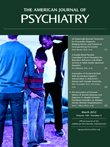Increased Medial Orbitofrontal and Amygdala Activation: Evidence for a Systems-Level Endophenotype of Bipolar I Disorder
Abstract
Objective:
Bipolar I disorder is highly heritable, but endophenotypes of the disorder mediating genetic risk are only beginning to be defined. The authors investigate state- and trait-related neural mechanisms related to motivation in euthymic bipolar patients and unaffected first-degree relatives of bipolar patients to define the status of motivational processing as a neural systems-level endophenotype.
Method:
Our study comprised two samples; the first consisted of 19 euthymic bipolar patients and 19 matched comparison subjects, and the second included 22 relatives and 22 matched comparison subjects. Motivational processing was assessed with a probabilistic reversal learning task during event-related functional MRI. Data were analyzed using a region-of-interest approach restricting analysis to the medial and lateral orbitofrontal cortex, the amygdala, the anterior cingulate cortex, and the striatum.
Results:
The authors observed increased activation in response to reward and reward reversal contingencies in the left medial orbitofrontal cortex in patients with bipolar disorder and in the right medial orbitofrontal cortex in their relatives. Activation of the amygdala in response to reward reversal was increased in patients and relatives. In response to reward, activation of the amygdala was greater only in relatives, but there was a significant negative correlation between medication and amygdala activation in patients.
Conclusions:
These results identify increased activity of the orbitofrontal cortex and the amygdala, related to heightened sensitivity to reward and deficient prediction error signal, as a candidate endophenotype of bipolar disorder. The results support a role of motivational processing in the risk architecture of bipolar disorder and identify a new systems-level therapeutic target for the illness.



